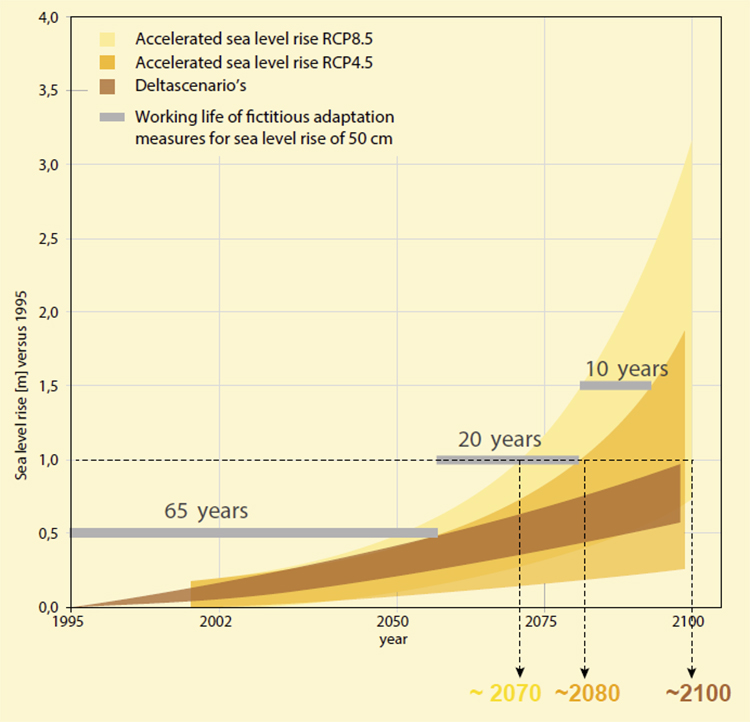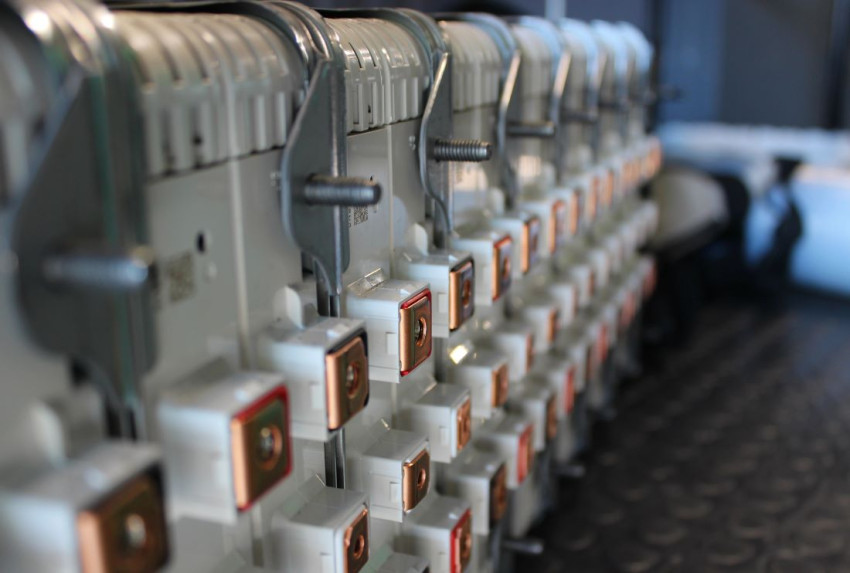
Accelerated sea level rise poses a major challenge to the Dutch delta
A possible acceleration of sea level rise will have major consequences for the Dutch delta. For example, it would mean a twentyfold increase in the amount of sand currently used for beach nourishment to maintain the Netherlands’ coastline. The Netherlands must therefore come up with a Plan B within ten years to defend the country against elevated sea levels.
This is evident from the study Possible effects of accelerated sea level rises drawn up by the Deltares water and soil management knowledge institute on behalf of the Delta Programme Commissioner. The study was published this afternoon, together with the new Netherlands Budget Memorandum.
‘Recent studies on the melting of the Antarctica icecap indicate that sea levels may rise faster than previously expected,’ says water management researcher Marjolijn Haasnoot of Deltares.

Up to now, a sea level rise of 80 to 100 cm by the year 2100 had been assumed, and all current measures for water management in the Netherlands are based on this estimate. ‘However, that level might already be reached by 2070. After that it will accelerate, to reach 100 to 300 cm by the year 2100.'
This is just one of the observations that has taken Haasnoot by surprise. ‘After 2050, sea level rises may accelerate. If you wait until such a sea level acceleration is actually measured, it will be too late to take any action.’
Large-scale transport of sand to the coast
The water systems in the low-lying delta of the Netherlands are facing major consequences. One example is beach nourishment, which currently involves the annual dumping of 12 million m3 of sand on or in front of beaches in the Netherlands to protect the existing coastline. 'With a sea level rise of 15 mm/year, we will need 4 to 5 times as much. If the rise accelerates, we will soon need 20 times as much, which is unprecedented.'

According to Deltares, the consequences for the Wadden Sea are uncertain: although some of the sand also reaches the Wadden Sea, the question is whether this is sufficient to allow the Wadden Sea to accommodate for such sea level rises. Exploratory calculations show that the Western Wadden Sea can no longer keep up with an increase of 6 mm/year or more, and the Eastern Wadden Sea with an increase of 10 mm/year or more.
Storm surge barriers closes far too often
The consequences for the storm surge barriers in the Nieuwe Waterweg and Oosterschelde, which both protect the hinterland from the effects of extreme weather, are also considerable. ‘A sea level rise of 1.5 m will require the Maeslant flood barrier in the Nieuwe Waterweg to be closed 30 times a year, something it wasn’t designed for. The Oosterschelde barrier will be similarly affected; if the sea level rises 1.3 m, it will have to close during every high tide, irrespective of the weather.’ If sea levels rise to such an extent, some kind of action is required for both storm surge barriers.
The freshwater supply will also be affected by a rise in sea level; salt will penetrate deeper into the rivers via the higher sea, and more salt water will percolate through the coastal strip via the subsoil. ‘The northern provinces in particular will then need much more freshwater to maintain the existing agricultural system.'
Plan b within ten years
According to Haasnoot, the consequences for water management in the Netherlands are so severe that work on a Plan B must begin immediately. 'We can’t wait until 2050 to make plans to deal with an accelerated rise in sea levels. Plan B must be done and dusted within ten years. We still have enough time to take measures, bearing in mind that there’s a delay of about 20 to 30 years between making a plan and implementing it.' The consequences of climate change are therefore knocking at the door, and the Netherlands has to take action quickly.
Haasnoot points out that the study once again stresses the urgency of measures to limit the emission of greenhouse gases. 'That’s the most important thing we can do now to limit damage.' At the same time, she says that the study is useful for ‘preparing ourselves in good time’.
The 2019 Delta Programme, also published this afternoon, provides another clear reference point in this respect. Delta Programme Commissioner Wim Kuijken has said that the 2021 recalibration is a good moment in time to decide on drawing up a Plan B.
If you found this article interesting, subscribe for free to our weekly newsletter!
Opening photo: Deltares report.







